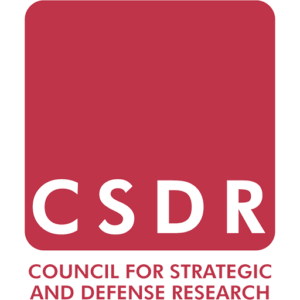With India aiming to capture a share of $100 billion in the global shipbuilding market and secure a position among the top 10 shipbuilding and repair hubs by 2030, Union Minister for Ports, Shipping and Waterways (MOPSW) Sarbananda Sonowal recently announced plans to establish two mega shipbuilding parks by 2030. These projects will be awarded through global bidding, on revenue or profit share commitment bidding. While the government will provide basic infrastructure and utilities, the private sector will contribute critical equipment, including cranes, lifting and cutting machines, and manpower training.
The Republic of Korea (ROK) is positioned as a crucial partner in achieving India’s shipbuilding objectives, as outlined in Maritime India Vision (MIV) 2030. TK Ramachandran, Secretary, MOPSW, has identified ROK as a potential partner for investments and technology transfer, confirming ongoing official talks regarding ROK’s interest in establishing shipbuilding and ship repair clusters. With its dominant position in the global market and extensive shipbuilding capabilities, ROK would be instrumental in upgrading shipyard capabilities, developing ancillary units, training a skilled workforce, and implementing shipyard automation—all essential elements for making the Indian shipbuilding industry competitive and future-ready.
Why Should ROK Invest?
ROK’s investment in Indian shipbuilding has strategic and commercial significance, aligned with its policy frameworks and economic interests in the Indian Ocean Region (IOR).
ROK’s Indo-Pacific Strategy outlines its ambitions to become a “Global Pivotal State,” expanding its scope for strategic engagement. As an advanced industrial economy with coveted strategic assets, the ROK aims to play a larger role in maintaining regional security and prosperity while enhancing its global strategic profile. Through “contributive diplomacy,” ROK seeks to shape regional cooperation agendas and stimulate Indo-Pacific development through nine Core Lines of Effort (CLOE), including “Economic Security Networks” and “Comprehensive Security Cooperation.”
The strategy prioritizes South Asia, particularly emphasizing strategic partnership with India, which it recognizes as a “leading regional partner with shared values.” This recognition was first formalized in the 2017 New Southern Policy (NSP), which designated India as one of 11 “NSP target countries” and acknowledged it as a “new growth engine” for the global economy.
Economic Stakes in the Indian Ocean Region
ROK’s economic rationale for investment is strengthened by its maritime presence in the IOR. The ROK Navy has established a significant regional footprint, having commanded the Combined Maritime Forces counter-piracy Combined Task Forces 151 six times to address piracy off Somalia’s coast. More critically, ROK-flagged merchant vessels maintain an extensive presence in these waters.
A substantial portion of ROK’s trade, mainly oil imports, transits through the Strait of Hormuz, the Indian Ocean, and the Malacca Strait. More than 60% of ROK’s oil consumption originates from the Middle East, with potential increases likely following recent $20 billion energy agreements with Qatar and Saudi Arabia. Investment in India’s shipbuilding industry would advance ROK’s Indo-Pacific Strategy goal of building “Economic Security Networks” while ensuring maintenance and repair services for ROK-flagged vessels securing strategic resources.
Pathways for Bilateral Shipbuilding and Repair Cooperation
India’s maritime industrial challenges are evident in its less than 1% share of the global ship repair market, with nearly 60% of vessel repairs occurring abroad—mainly due to the absence of a domestic financing ecosystem. This dependency on foreign facilities for value chain financing, insurance, ship ownership, leasing, recycling, and repairs presents significant opportunities for India-ROK collaboration, as outlined in MIV’s objectives.
First, addressing high shipbuilding costs requires leveraging state-of-the-art technologies employed by ROK’s shipyards. Industry leaders like Hanwha and Samsung Heavy Industries (SHI) are advancing toward fully digital shipyards. Their smart yard technologies optimize operations scheduling and execution while automating information flow for construction, accelerating the design-to-production process and reducing costs. These innovations have enabled ROK’s yards to meet the growing global demand for LNG carriers through enhanced vessel efficiency and design capability.
SHI’s Goeje shipyard, maintaining the world’s highest production automation rate, employs robot systems for activities ranging from cargo tanker welding to pipe inspection. The Korean shipbuilding industry also pioneers digital twin technology, enabling real-time monitoring to maintain competitiveness while enhancing shipyard and worker safety.
Second, MIV’s target is to enhance ship repair yard capacity through floating drydock development, which addresses the current absence of ship repairs in major ports like Mumbai, Vishakhapatnam, and Paradip. Authorizing digitized shipyards such as Hanwha and HD Hyundai Heavy Industries to construct floating dry docks could efficiently meet India’s peak repair demands while reducing operational costs.
Third, India’s limited labor productivity—approximately one-tenth of Korea’s $122,994 per employee—presents opportunities for collaboration with Korean maritime training institutes. India’s planned Centers of Excellence (CoE) for ship repair could benefit from partnerships with institutions like the Korea Maritime Institute (KMI), whose expertise in logistics technology development and ship operations could enhance workforce training and competency development.
Fourth, MIV’s goal of indigenizing the ancillary ecosystem could be advanced through a partnership with the Korea Marine Equipment Association (KOMEA), which holds 37% of the global shipbuilding ancillaries market share. Joint ventures between KOMEA and Indian counterparts—including IIT, Bharat Heavy Electricals Ltd, and the Indian Electrical & Electronics Manufacturers’ Association—could establish ancillary parks and design hubs while reducing costs.
India’s shipbuilding industry stands to gain significantly from ROK’s capabilities and expertise, potentially helping realize India’s MIV 2030 goals and ambitions to rank among the top five maritime industrial countries by 2047. Through direct investments, joint ventures, technology sharing, and training, this collaboration would benefit both nations while strengthening their strategic partnership.
